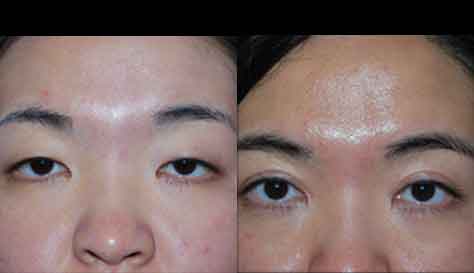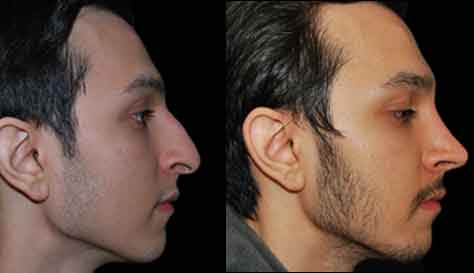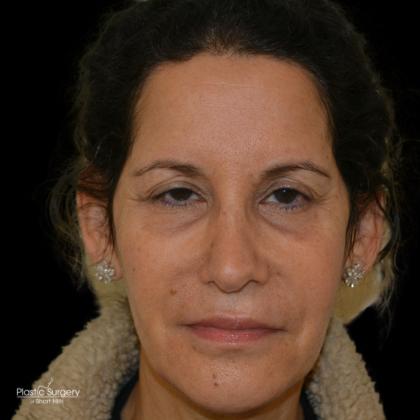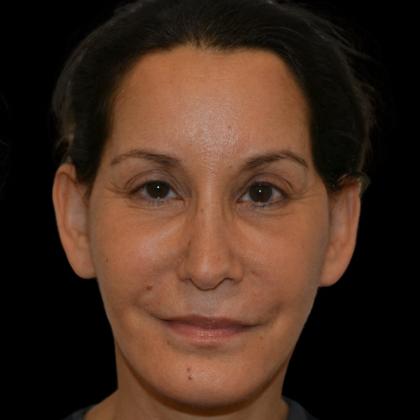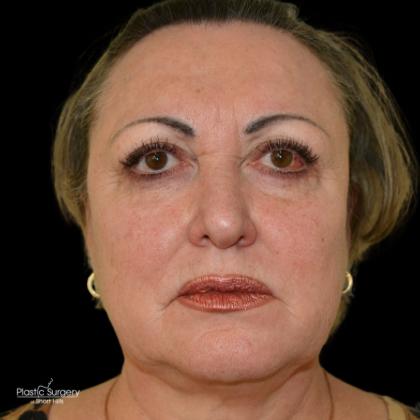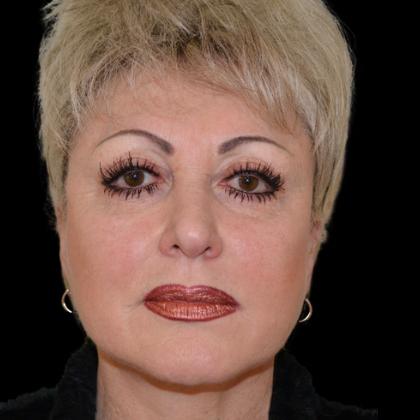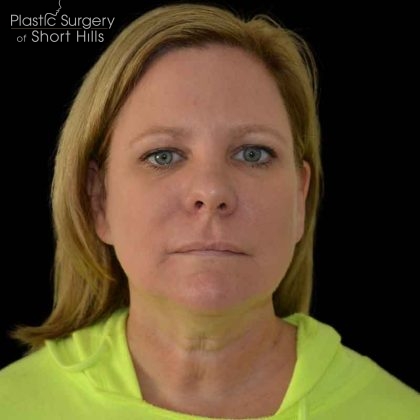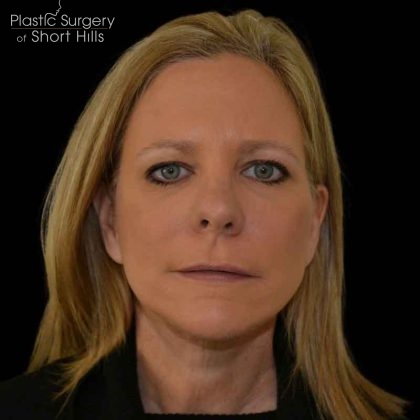Facelift
Conveniently located to serve the areas of New Jersey and New York
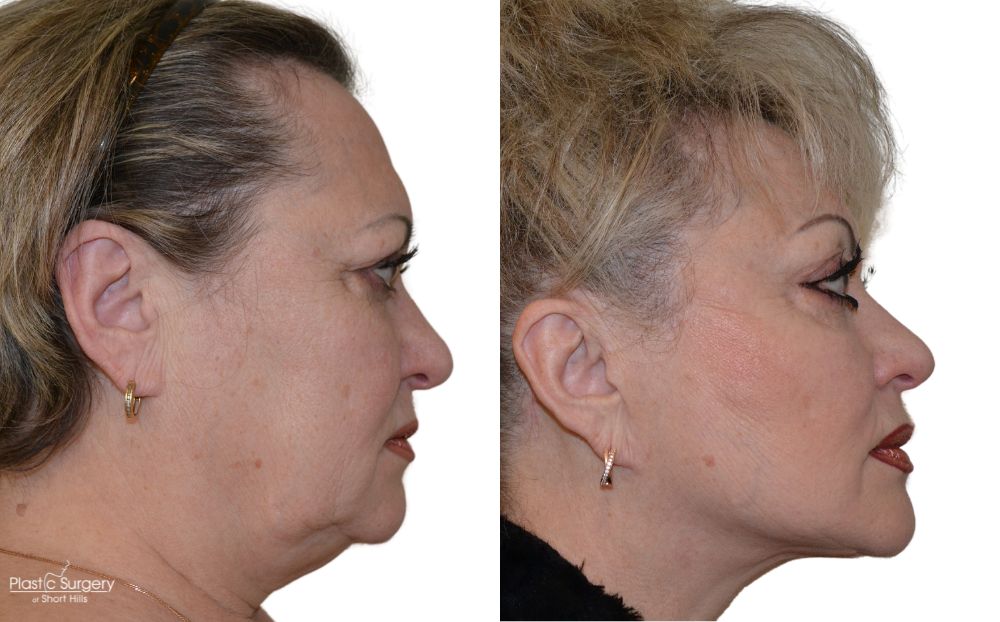
A facelift is a complex cosmetic surgical procedure to rejuvenate the face. Contrary to popular belief, a facelift involves far more than just stretching the skin to produce the desired results. A facelift can be performed using several different advanced techniques that address the many layers of facial tissue that can display unwanted signs of aging. Facelifts are carefully tailored procedures, and an experienced and skilled Facial Plastic surgeon will carefully select an approach that best suits the unique anatomy of each patient.
Contents
Before and After Photos
Many men and women choose a facelift procedure to fight common signs of aging such as sagging skin throughout the face and neck. Over the years, surgeons have developed increasingly effective ways to perform this surgery. The deep plane and the SMAS facelift are two popular facelift techniques. The many and complex tissues of the face play a vital function in facial expression and appearance, and must be expertly altered to achieve the best aesthetic appearance for each patient.
Led by skilled double-boarded Facial Plastic surgeon Dr. Alexander Ovchinsky, Plastic Surgery of Short Hills provides premium plastic surgery services in Essex County, New Jersey. Specializing in facial plastic and reconstructive surgery, Dr. Ovchinsky can help you refresh and rejuvenate your complexion. Call to book a personal consultation to discuss your facelift at (973) 379-0101, or send us your inquiry online.
@therhinoplastyguy FACELIFT BY DR OVCHINSKY 🔥 #deepplanefacelift #facelift #plasticsurgery #njplasticsurgery #foryou #faceliftnj #faceliftexpert ♬ original sound – Anna Grace Newell
About the Facelift
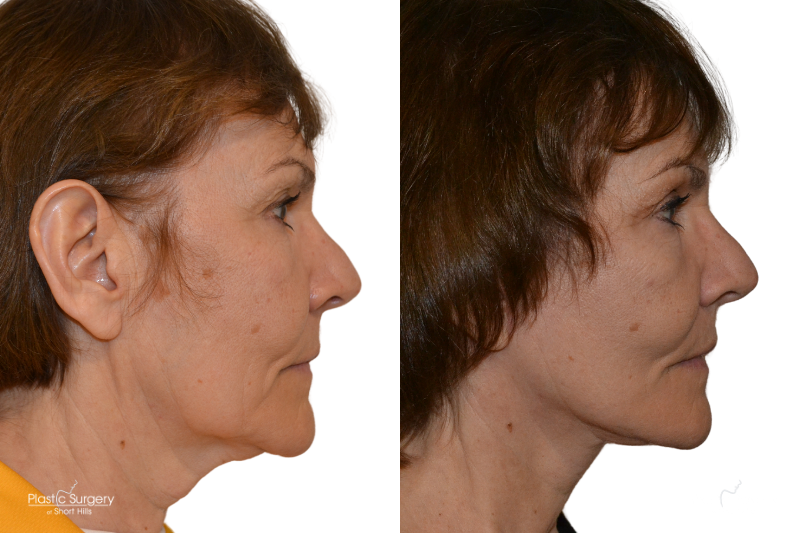
Despite advances in non-surgical procedures such as the placement of fillers and Dysport, radiofrequency tightening modalities (Morpheus 8, ThermiTight and Trusclupt, just to name a few) and ultrasound tightening option (Ultherapy), the facelift is still a popular surgery worldwide. The results of a facelift last for many years, compared to the fleeting results of semi-permanent anti-aging treatments. The ever-evolving knowledge of human facial anatomy has led to more precise techniques that produce better, more tailored results than were achievable in the past. And, current clinical studies confirm that this procedure has high patient satisfaction rates and a shorter recovery time. (1)
The modern facelift requires detailed knowledge of facial anatomy. The superficial musculoaponeurotic system (SMAS) is the organization of muscles and fascia under the skin of the face. Manipulation of these facial structures during a facelift is one of the most popular approaches to this procedure.
Facial Aging
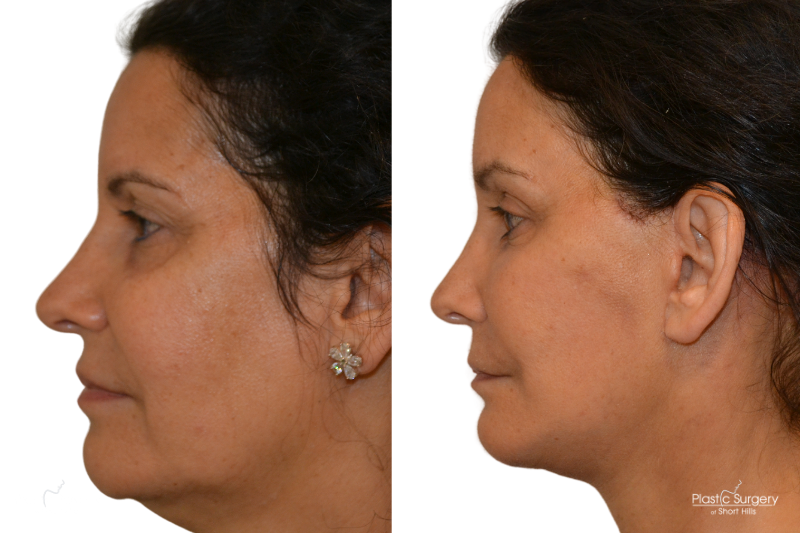
In essence, the facelift is a procedure that aims to reverse the effects of gravity. Gravity affects our soft tissues and weakens the ligaments that support them. Skin laxity (sagging), lipoatrophy (localized fat loss), and bony resorption are all natural parts of the aging process and affect the appearance of the face on a structural level. This can result in our faces looking markedly different as the years pass. Face and neck aging can manifest in the following ways:
- Dynamic wrinkles and lines
- Temporal hollowing
- Sagging jowls
- Lower eyelid sagging
- Nasojugal and nasolabial grooves
- Less jawline and cheekbone definition due to bone resorption
- Neck laxity with plastismal bands, saggy skin and ex
Moreover, cheek tissue changes can have a significant effect on the face’s appearance. Known as the buccal fat pad, this area of adipose tissue between the muscles in the cheeks can migrate to a lower position over time. This leads to the dreaded “jowls” and is one of the most common reasons for people to seek rhytidectomy. (2)
What is a SMAS facelift?
The SMAS facelift is one of the most common, and effective facelift techniques performed today. The SMAS is a dense layer of muscle and fascia located between the skin and the deeper fat of the face. Fascia is connective tissue that connects soft tissues, muscle, and bone together. The SMAS facelift raises the skin and the SMAS individually, rather than raising them in unison for a generic “lift.” By carefully adjusting each layer of tissue in this way, Dr. Ovchinsky can provide refined, natural-looking results. Popular with patients in their late 40s and 50s, the SMAS facelift offers patients a way to achieve the most effective aesthetic results.
Deep Plane Face Lifting
Another very effective and the most robust type of facelift is the deep plane facelift. Originating in the 1990s, it differs from the SMAS facelift because the surgeon addresses the tissues beneath the SMAS so that once the necessary adjustments are made, the SMAS, malar fat pad and the skin can then be lifted together. This facelift technique involves working under SMAS and lifting it up all the way to the nasolabial folds and the corners of the lips while releasing anchoring bands, or retaining ligaments, for better SMAS mobilization. The surgical dissection also is carried down to the neck underneath the neck muscle (platisma). This extensive dissection and release of tissues allows for better tissue repositioning which creates more drastic, and at the same time more natural result. The lifted tissues are secured at the level of the fascia, which can ensure effective long-term results without any tension placed on the skin once the incisions are closed. (3) This technique is good for patients with significant facial and neck sagging as well as for younger patients with mild facial laxity as it will provide a very nice, and at the same time natural improvement.
Benefits of a Facelift
A facelift can be beneficial for many reasons:
- Elevates sagging facial tissues
- Smooths wrinkles and lines
- Recontours the jawline
- Corrects neck laxity
- Subtle, well-hidden scars
- Easily combined with other procedures
- Long-lasting results
A Natural Look
Many people aspire to look as young as they feel. The majority of men and women want to do this in the most natural-looking way possible. Dr. Ovchinsky has heeded these requests, and has drastically improved many traditional techniques for facial rejuvenation. Incisions are placed with great care and skillfully closed to become seamless and imperceptible once healed. And, patients have the option of additional non-surgical treatments for total rejuvenation. By using hybrid surgical techniques and providing other non-surgical procedures such as Dysport injections and fillers, patients can achieve the most successful results. (4)
Candidates for Facelift
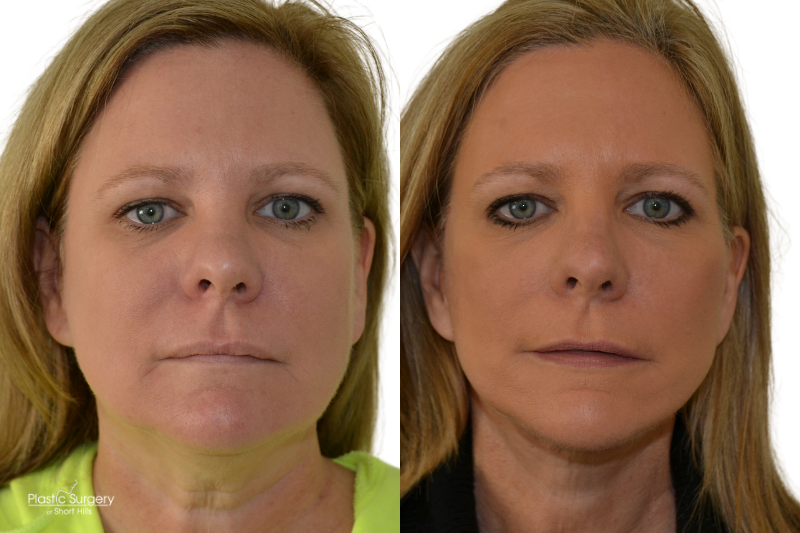
A facelift is a major surgery. Dr. Ovchinsky works closely with patients interested in a facelift to ensure that they are able to safely undergo the procedure, and understand what it requires. Although facelifts are more popular for middle-aged people, more and more younger patients elect to undergo facelift surgery. You may not be a good candidate for a facelift if you have certain underlying medical conditions (e.g. poorly controlled diabetes, autoimmune disease, bleeding disorders, etc). It’s also important to have realistic expectations and be willing to follow all of the pre- and postoperative instructions that you are given.
Personal Consultation
Your initial consultation is an essential first step to discuss what you want to achieve with this surgery. Dr. Ovchinsky meets with each of his patients for a detailed discussion of facial anatomy, medical history, surgical techniques, and preparation. After you have provided some information about your general health, Dr. Ovchinsky will analyze the unique structure of your facial anatomy and assess the areas showing signs of aging. If he determines that a facelift will be a beneficial procedure, he will walk you through what a facelift can achieve in your circumstances. He will then finalize a customized treatment plan and schedule your surgery. You’ll then be given consent forms to sign, additional instructions, and prescriptions. Before your facelift can proceed, you will need to obtain medical clearance from your primary care physician which may include blood work, a chest X-ray, and an EKG test.
Preparation
There are a few important things you should do before your facelift procedure:
- Stop smoking prior to your procedure (at least 4 weeks beforehand)
- Discontinue use of blood-thinning medications (e.g. NSAIDs, aspirin)
- Acquire the necessary medications and supplies for your recovery
- Stop food and drink intake at midnight on the day before your procedure
- Arrange transportation to and from the facility, as you will not be able to drive yourself home
To help your preparation on the day of your surgery, please arrive at the surgery center without any products on your face, including makeup. Washing your hair may be more difficult to do after surgery, so we advise that you do so the night before.
Patients should stop smoking up to 4 weeks before their facelift. Statistics show that skin flap necrosis (tissue death) is 12 times more common in smokers who undergo any type of facelift. (2)
Facelift Procedure
On the morning of your surgery, leave jewelry and contact lenses at home and please do not wear makeup. The specific details of your facelift will depend on your goals, your facial anatomy, and the chosen technique. However, every facelift procedure follows a similar sequence of stages.
Anesthesia – Due to their complexity, the majority of facelift procedures are conducted while the patient is under general anesthesia. Twilight anesthesia, where the patient does not feel pain but is not fully sedated, may be an option for some patients. Certain facelifts can be done under local anesthesia- Dr. Ovchinsky will discuss this option with you if you are a candidate.
Incisions – While facelift techniques are varied to suit individual needs, the incisions in all cases are well camouflaged by the hairline and natural creases of the ears and are generally imperceptible once they heal.
Tissue Repositioning – Dr. Ovchinsky will manipulate the underlying tissues with specialized surgical tools. He will expertly assess which areas need to be adjusted to achieve the most natural-looking results.
Skin Excision – After repositioning and supporting the underlying tissues, Dr. Ovchinsky lifts the facial skin and carefully removes the excess. He pulls the skin to the necessary tension and trims it to fit seamlessly.
Sutures – Once the skin has been resected, Dr. Ovchinsky will conclude the surgery by carefully suturing the incisions, ensuring a discreet, barely noticeable scar once fully healed.
Recovery
Please follow the recovery instructions closely to protect your results.
- Use ice packs to reduce swelling. Do not apply ice directly to the area.
- Use pillows to keep your head elevated, and avoid lowering your chin to your chest.
- Avoid any unnecessary head and neck movement. Of turning, it’s advised to turn the full body rather than just the neck
- Take pain medication as prescribed to mitigate discomfort.
- Continue to avoid aspirin and other blood-thinning pain medications.
- Continue to refrain from smoking
- Tight blood pressure control is essential to minimize the risk of bleeding or hematoma
- You will likely need to follow up with Dr. Ovchinsky next day after your surgery to remove the drains and bulky dressing
- Once compression bandages are removed, you may need to wear a facial support garment.
- Resume bathing normally after a week. Take great care when washing your head and neck at this time.
It is recommended for patients to arrange for a responsible adult for help at home during the first 24 hours after their facelift. If additional assistance is needed with your after care please let our office know and we will be able to provide you with a further information.
Results
Facial swelling and bruising are to be expected following a facelift. Some patients may need a postoperative drain which will be removed in the days after your procedure. Because swelling takes time to subside, most patients will start to see their finished results after about four weeks, though healing very much depends on the individual.
Plastic Surgery of Short Hills is here for every patient. If you have any questions or concerns during your recovery, please do not hesitate to contact us. After follow-up assessments, you will be free to enjoy the rejuvenating results of your facelift procedure.
Cost of a Facelift in Short Hills, NJ
The cost of a facelift will depend on the individual, and if any further procedures are added to the service. For more details, and to book a personal consultation with Dr. Ovchinsky, please call (973) 379-0101 or reach out via our contact page.
Discover more about plastic surgery, reconstructive surgery, and med spa services we offer by reading the Plastic Surgery of Short Hills blog.
FAQ
How long does a facelift take?
A facelift may take anywhere from 2 to 6 hours depending on the type of surgery, the degree of facial laxity, if other procedures are being performed at the same time. These often include a platysmaplasty (neck tightening), chin implant, blepharoplasty, lip lift or buccal fat reduction.
What is a SMAS facelift?
The SMAS (SubMuscular Aponeurotic System)is a muscular-fascial layer under the skin that is tightened and repositioned during a SMAS facelift. Because the surgeon is not just pulling at the skin, this gives better and longer-lasting results. The “pulled look” is avoided, the incisions heal faster, and the patient looks better. While pretty much all contemporary facelift procedures involve some degree of SMAS manipulation and tightening, it is the extent of this manipulation that differentiates various types of facelifts. So-called “SMAS plication” involves overlapping the SMAS tissue with the sutures thus tightening it. This technique avoids dissection of the SMAS and, while being a faster option it may not allow for sufficient SMAS mobilization thus limiting the final results. “SMAS imbrication” technique involves dissection under the SMAS layer for various lengths, pulling the SMAS, excising its excess, and securing the SMAS in a new lifted position with sutures. This is probably one of the most common facelift techniques used as it combines the benefits of good SMAS mobilization (and therefore good final results) with a limited faster dissection of the tissues and nearly complete avoidance of the facial nerve during the surgery.
What’s the difference between a deep plane facelift and a SMAS facelift?
A deep plane facelift involves more extensive dissection of the SMAS and is carried all the way to the nasolabial fold. The advantage of this approach is excellent mobilization of the SMAS and malar fat pad allowing for a significant degree of facial tightening and potentially providing longer-lasting and more natural results. A deep plane facelift requires more dissection and, therefore, longer surgical time. It also involves direct exposure of the facial nerve with a potentially increased risk (albeit still very minimal) for facial nerve injury.
Can I get a facelift if I smoke?
Smokers, no matter how few cigarettes they smoke, should not have a facelift performed unless they completely abstain from cigarettes both before and after surgery. The length of time to abstain will vary depending on the surgeon but will be at least two weeks before and two weeks after surgery. A nicotine patch is just as harmful as a cigarette and cannot substitute for abstinence. A smoker who wishes to have a facelift must be honest with themselves and their surgeon or horrible complications can result including loss of a large portion of the skin on the face requiring reconstructive surgery.
References
- Rohrich, R. J., Sinno, S., & Vaca, E. E. (2019). Getting Better Results in Facelifting. Plastic and Reconstructive Surgery – Global Open, 7(6), e2270. https://doi.org/10.1097/gox.0000000000002270
- Yang, A. J., & Hohman, M. H. (2022). Rhytidectomy. Retrieved April 26, 2022, from PubMed website: https://www.ncbi.nlm.nih.gov/books/NBK564338/#:~:text=The%20first%20documented%20facelift%20was
- Raggio, B. S., & Patel, B. C. (2021). Deep Plane Facelift. Retrieved from PubMed website: https://www.ncbi.nlm.nih.gov/books/NBK545277/
- Jacono, A. (2021). The Art and Science of Extended Deep Plane Facelifting and Complementary Facial Rejuvenation Procedures




